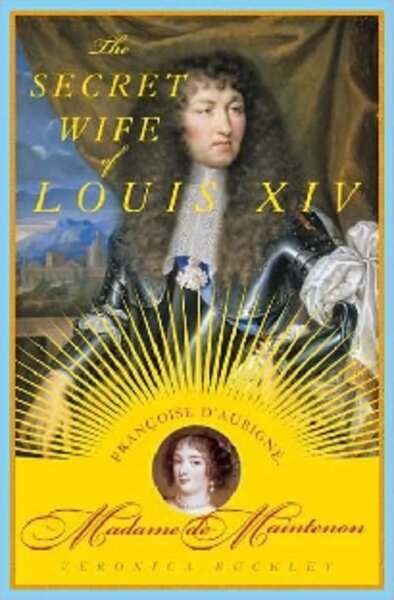The Secret Wife of Louis XIV
Loading...
She was born into ignominious circumstances – in a French prison in 1635, to a 50-year-old father whose wife was the warden’s 24-year-old daughter, and who was a murderer, a national traitor, and an incorrigible con man. But despite her bleak beginning and itinerant childhood, Françoise d’Aubigné proved adept at navigating the most elite social circles of 17th-century France, eventually marrying royalty.
This real-life fairy tale is told with flair and compassion in Veronica Buckley’s The Secret Wife of Louis XIV. (Buckley’s first book was a biography of another extraordinary 17th-century figure, Queen Christina of Sweden.)
D’Aubigné might have had a better start in life: her scandalous father, Constant, stood to inherit a vast portion of his family’s wealth, including various estates and a governorship position in western France. But Constant was no aristocrat. His father considered him a “wretch” who “took to gaming and drinking,” and he disinherited him.
For Constant and his wife, Jeanne, a daughter was “a liability, draining the family purse for a paltry dowry to persuade some man to transfer her to his own account books.”
Thus d’Aubigné spent her childhood shipped off to different homes and caretakers, maintaining a chilly relationship with Jeanne, who bullied her daughter and was openly contemptuous. As the author notes, “cruelty, and from a mother’s hands, is a powerful catalyst in the forming of character.” Yet the girl proved resilient, intelligent, witty, kind – and, perhaps further riling her mother – exceptionally beautiful.
At age 15, penniless, d’Aubigné found her way to Paris, where she met Paul Scarron, a middle-aged man famous for his risqué poetry and for hosting one of the most sought-after literary salons, which drew the city’s cultural elite. He was also crippled and disfigured. “My body, it’s true, is most irregular,” he once said. “Pregnant women aren’t even allowed to look at me.” (In an odd coincidence, d’Aubigné’s father had once borrowed 1,148 livres from Scarron, and never repaid the debt.)
They married in 1651, even though Scarron “could do little more than scratch his back with a little stick and scribble with one crabbed hand.” As a minor, however resourceful, d’Aubigné knew that she had few options – and begging in the streets, as she once had, was not one of them. Marriage would provide security and companionship (two things she craved), and raise her status in Parisian society.
After Scarron died in 1660, d’Aubigné was hired as a governess by her friend Madame de Montespan. She was the favored mistress of King Louis XIV, who fathered Montespan’s illegitimate children. But the women fell out when the king began lusting after the virtuous governess, having grown tired of the demanding Montespan.
At first, d’Aubigné refused his advances, which she found distressing and “sinful,” but eventually she succumbed. She bought an estate at Maintenon with her earnings, and in 1678, the king gave her the title Marquise de Maintenon. When his long-suffering wife, Queen Marie-Thérèse died five years later, King Louis married d’Aubigné in a small ceremony. She was 48; the king, still “handsome and vigorous,” was 45. They lived at the spectacular Versailles, with its 452 bedrooms, where he had also moved his entire government and court.
He was utterly devoted to his new wife and regarded her as a confidante; she, in turn, loved him fiercely. The relationship was not without its dissatisfactions, yet he remained faithful and admired her many virtues, including “self-control, a keen sympathy for the suffering, and a distaste for frivolity and extravagance.” Although their marriage was an open secret, it could never be officially acknowledged – she was a queen with no crown – and sadly, she was well past the age of childbearing. She made her domain the education of children instead, establishing an innovative girls’ school that remains open today.
The king’s reign lasted 72 years, longer than any European monarch. He died in 1715, and his wife outlived him by four years. By the end of her life, she had given away most of her possessions and money.
With a narrative exceeding 400 pages, it’s impressive that this drama-filled biography never drags. Buckley demonstrates that d’Aubigné never fully shook the trauma of her wretched youth, and showed a lifelong empathy for the poor. “The Secret Wife” is a well-written tribute to a woman whose ascent to power and wealth was achieved through sheer determination – and even more remarkably, without sacrificing the virtue of kindness.
Carmela Ciuraru is the author of several anthologies, including “Poems for America.” She is writing a nonfiction book for HarperCollins.






